Lessons from a professional forager – get curious, allow plants to fail and embrace invasive weeds, says NYC restaurant supplier
Discover how to reframe your attitude to weeds and forage for edible delicacies right on your doorstep
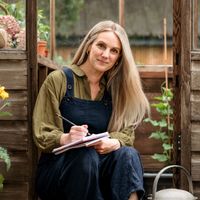

When you think of invasive weeds, a high-end culinary experience in a Michelin-starred Manhattan restaurant might not be the first thing that springs to mind. Or maybe it would. See, weeds are having something of a cultural moment in food. The rise of Copenhagen's Noma to the world stage in the 2010s led to a growing interest in foraging for ingredients we have all around us in abundance, which most of us disregard as useless, or view as a problem rather than a potential food source.
According to Tama Matsuoka Wong, a New Jersey-based finance lawyer turned professional forager, this shift in how we view plants is gaining momentum. ‘Any chef that is ingredients-focused is interested in edible weeds and wildflowers; supply cannot meet demand right now,’ she says.
And with so many of us adopting changes to our diets in favor of more plant-based alternatives to meat and dairy, Tama believes the trend has firmly taken hold in your average household kitchen. 'I think it began during the Covid19 pandemic when we were all desperate to get outside, and people started to really look at the land in a different way - especially the younger generations.'
‘It was a cultural shift that led me to look at weeds in a different way,’ says Tama. ‘Culture ties us to food and plants. It all began when I noticed we had loads of Japanese knotweed on our land, which as many people know is an invasive plant.
'My father is Japanese, and had invited some friends to visit us from Japan. When I said I was trying to get rid of this problematic plant, they told me this is eaten in Japan and viewed as a delicacy that's good for your health. It was a lightbulb moment, and I remember thinking maybe I don't have to feel so bad about these weeds.'


Tama Matsuoka Wong is a wild food forager, author, and gardener based in New Jersey. She supplies some of New York City's most prestigious restaurants and has a deep knowledge of wild produce that informs her impeccable taste in their flavors and uses.
How it all began
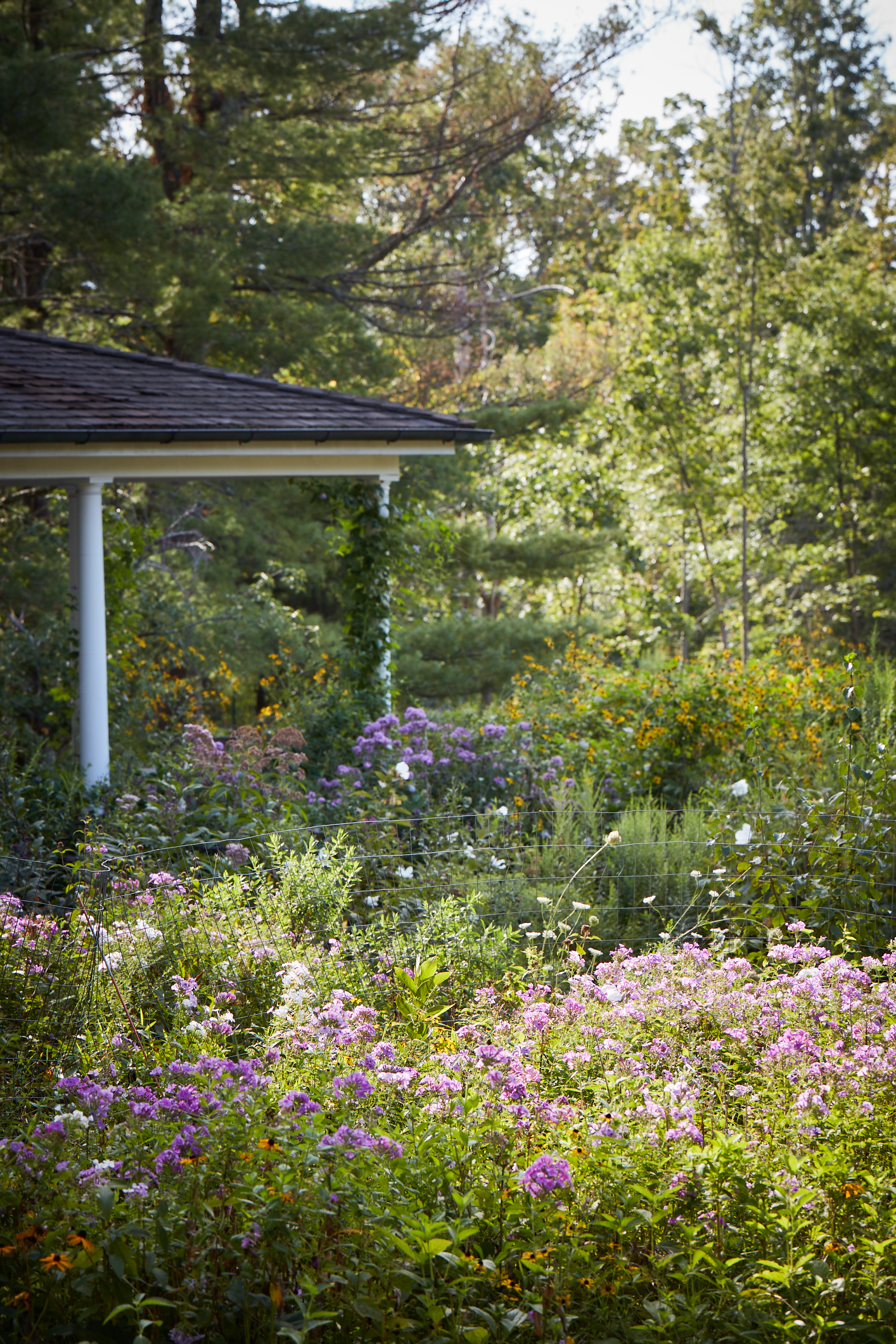
Tama’s own mindset continued to shift because, in her words, she was a failed gardener. ‘Everything I tried to plant simply died,’ she says. She had recently returned to the US after years of working as a financial services lawyer in Hong Kong, and was searching for a way to reconnect with the land and her garden.
She says: 'I started looking at the land and asking what is growing there naturally and thriving without me having to do anything?’
Design expertise in your inbox – from inspiring decorating ideas and beautiful celebrity homes to practical gardening advice and shopping round-ups.
Tama’s love for plants and food led her to approach Eddy Leroux, executive chef at Restaurant Daniel in New York City, initially just to find out how to cook with the edible plants she had growing on her land. She brought him a bunch of the mint-scented perennial anise hyssop, and some nettles, and he transformed them into something delicious.
After that initial meeting, they began working together experimentally, where Tama would take in different plants each week for the chefs to cook with. They caught a lot of people's attention, and, as it turned out, had hit upon the zeitgeist. Tama became in demand across the city.
She has been supplying the Daniel Beloud restaurant group for over a decade, as well as many other prominent names on the New York City culinary scene including Ilis in Brooklyn, Korean restaurant Atomix and Nordic-inspired Aquavit, both with two Michelin stars, plus the bartending group Sugar Monk.
Embracing the weeds
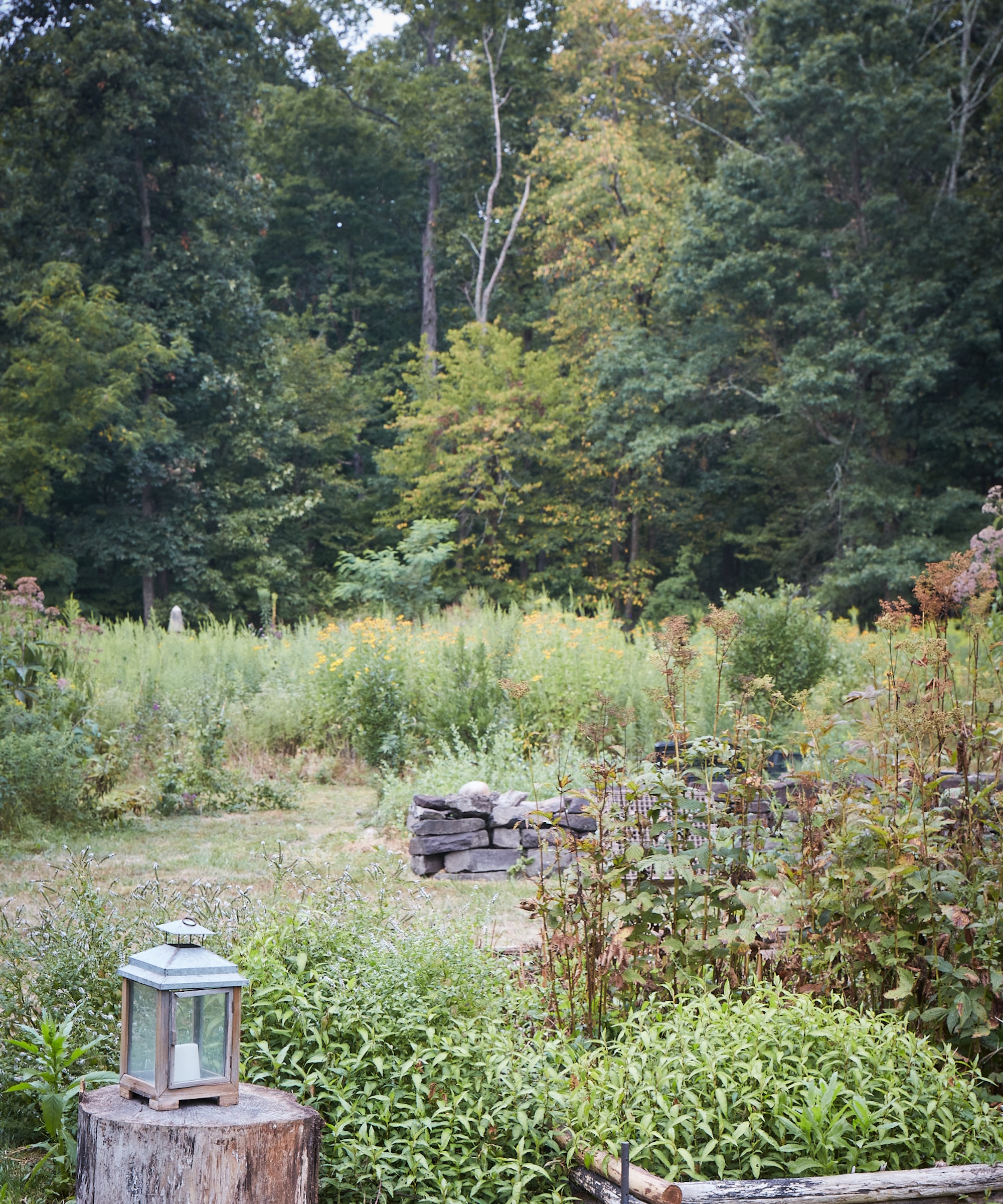
Her her new book, Into the Weeds: How to Garden Like a Forager, out in March and available to pre order on Amazon, Tama wants us to rethink the way we garden, in order to live more in harmony with the land around us.
‘The reason I feel so passionate about this is if you step back, it is just common sense,’ she says. ‘I am not a meticulous gardener at all. My philosophy is do less and see what comes up. Get curious and you will be surprised at what you see. People can't believe I have a meadow on my land which I didn't plant.’
Tama is quick to stress that a backyard can be so much more than just how it looks. 'It is a place you interact with, smell, taste, enjoy - and the more you do that the more you will get happiness out of it,' she says. 'You can relax knowing you don't have to control everything.'
Gaining confidence as a forager
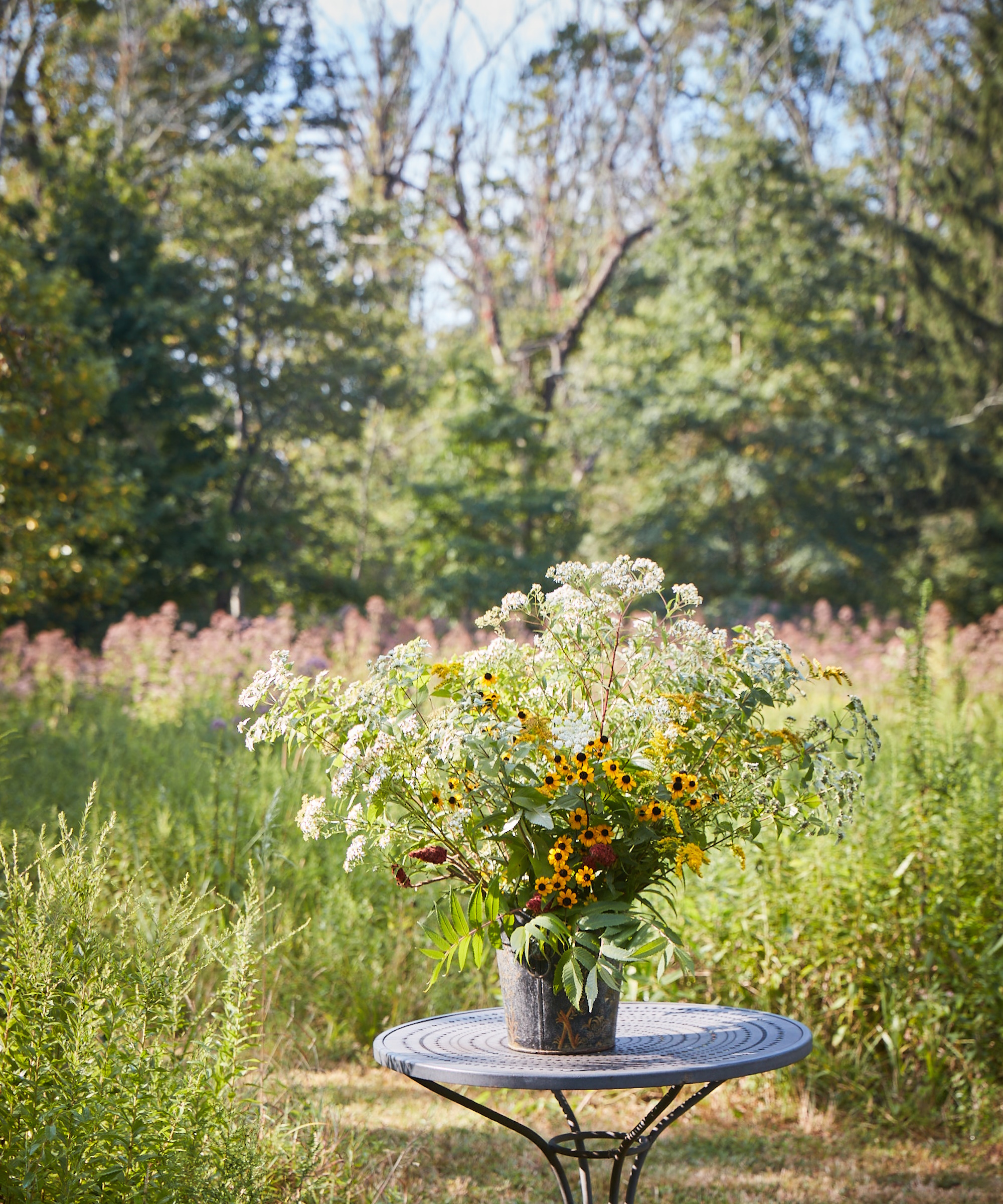
This is all very well in practice, but for someone who hasn't had much experience in foraging for edible plants, getting started may feel a little daunting.
'Just start with one thing,' advises Tama. 'Think about something you know well in your garden, such as a dandelion. Or for example, people have a lot of fig trees in this area of New Jersey, but we barely get any fruits from our fig trees. People don't realise you can use the leaves as they are edible, so you don't have to feel discouraged that your tree isn't fruiting.'
Tama adds that oftentimes when people are starting out with foraging, there is a temptation to try everything in its raw form, but what she has discovered is these plants are a lot more digestible - and taste better - when they are cooked.
How to design a wild area
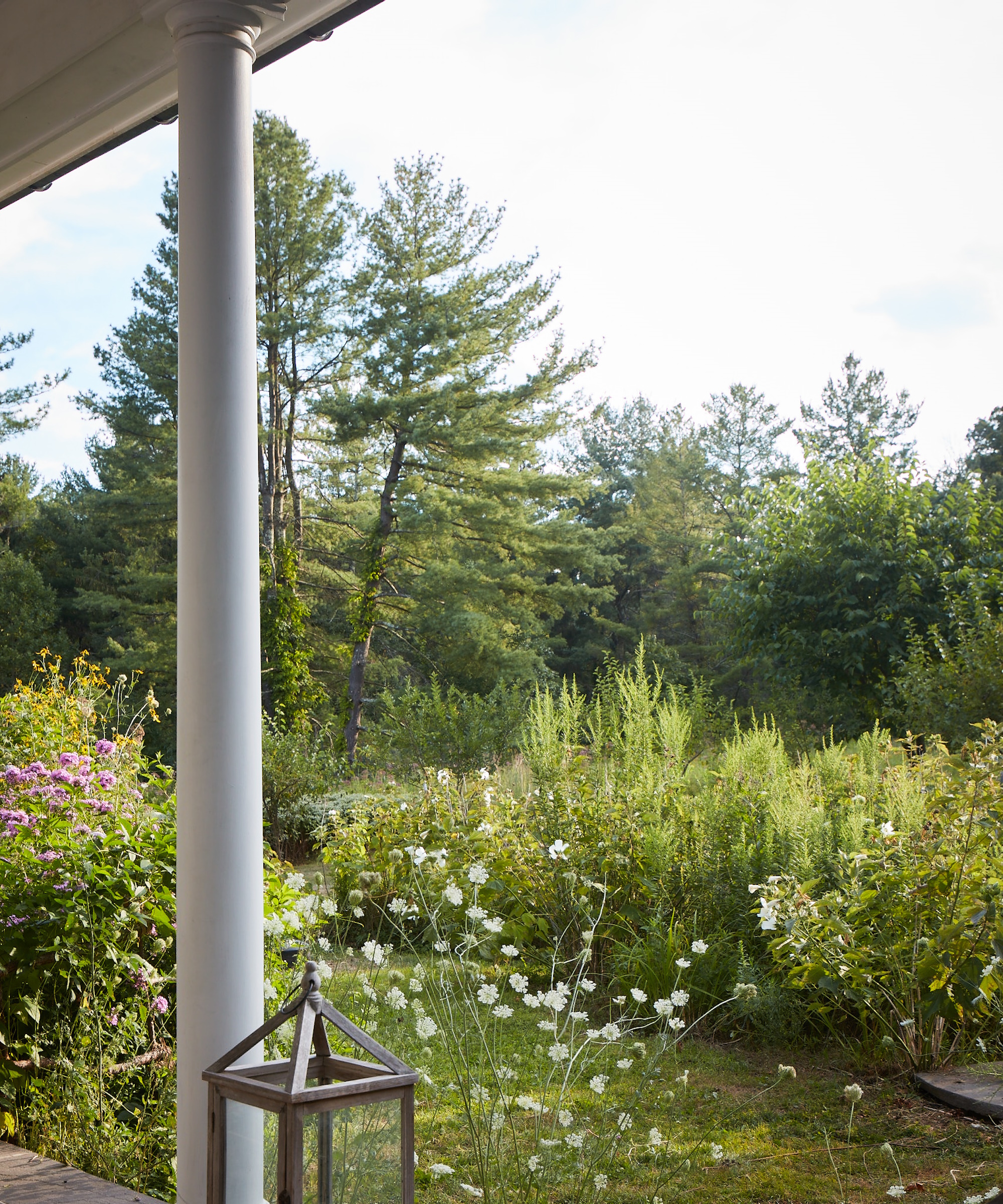
If allowing the weeds to grow or a meadow to form fills you with anxiety about how your garden will look, or what the neighbors might think if your yard is 'messy', Tama has a brilliant piece of advice.
'Here is the key - when you have done it, make it look like you've done it with intention,' she says. 'For example, we had a dead ash tree on our land, but instead of trying to remove the old wood, we took advantage of it and left it there. It is a haven for insects and woodpeckers, and we even had three flushes of oyster mushrooms off it. But people might look at it and say it is ugly or neglected.
'In Japan, you put a little rope around the tree - as an ode to the tree and a mark of respect - and by doing so the dead tree suddenly looks intentional and meant to be there. Try to fence off your area or put up a sign or a label, then it shows people it is intentional, and no longer just a weedy pile. Enclose a wild patch it and it will transform.'
FAQs
Where are the best places to forage for plants?
If you don't have a large patch of land or backyard to forage from, get to know your neighbors, farmers and local land owners. Many of them will have areas chocked by invasive plants and will be happy for you to go and forage them. Always ask the landowners permission before picking anything, wherever you are, and steer clear of foraging in local parks.
How can I identify plants to forage?
There are a lot of places you can go to find out about and identify particular plants and weeds, such as your local university extension or agricultural school. The app iNaturalist is also a great resource for identifying plants. And don't forget to ask your neighbors and at local gardening clubs for advice - people want to share their knowledge with you.
In the introduction to her book, Tama observes that, as opposed to manipulating the the land, plying it with chemicals and wondering why plants fail, we should all try to 'rethink the way we garden and our role as stewards of the land… in order to embrace curiosity and humbleness'.
By shifting our mindsets even just a little, we can all start embrace invasive plants and see them in a whole new, much tastier, light.

Rachel is a gardening editor, floral designer, flower grower and gardener. Her journalism career began on Country Living magazine, sparking a love of container gardening and wild planting. After several years as editor of floral art magazine The Flower Arranger, Rachel became a floral designer and stylist, before joining Homes & Gardens in 2023. She writes and presents the brand's weekly gardening and floristry social series Petals & Roots. An expert in cut flowers, she is particularly interested in sustainable gardening methods and growing flowers and herbs for wellbeing. Last summer, she was invited to Singapore to learn about the nation state's ambitious plan to create a city in nature, discovering a world of tropical planting and visionary urban horticulture.